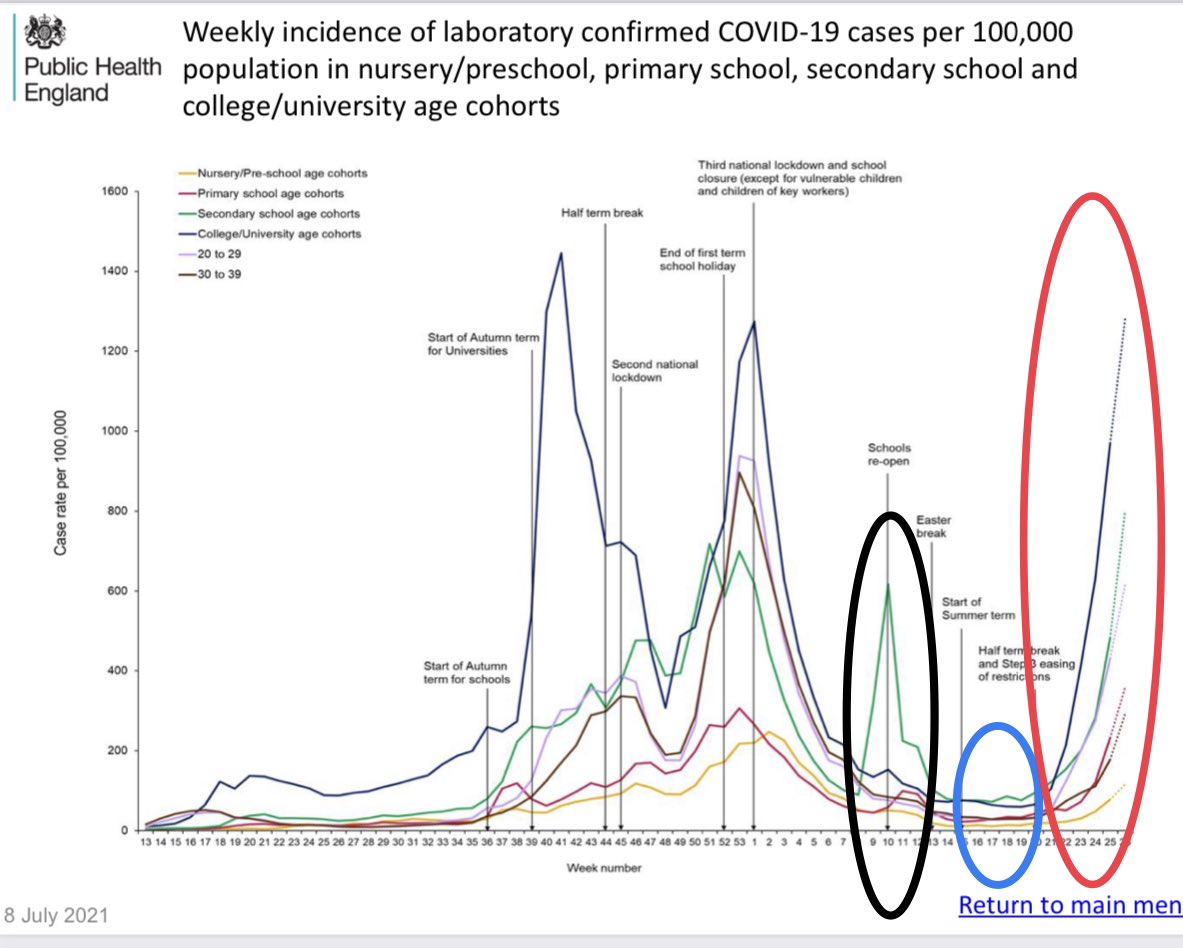1/ Following a barrage of Twitter abuse because of my quote about our School Infection Survey (SIS) results today, I would like to reiterate what we have learnt about #COVID19 after 9 million students returned to full-time in-person education in England in March this year 👇 

2/ The UK went into national lockdown including school closures in Jan 2021 following emergence of the Alpha variant. #COVID19 cases declined rapidly & schools reopened fully on 08 Mar 2021 (wk 10) when the rest of England remained in lockdown 👉 gov.uk/government/sta… 

3/ During the 3 weeks until Easter holidays (wks 10-13, black circle), we saw a small ⬆️ in #covid19 cases among primary school kids (red line) & (because of mass rapid antigen testing before schools reopening) a large short-lived spike in secondary school kids (green) 👇 

4/ Note, however, that the overall trend remained downwards including in the adult age-groups & remained *low & flat* for 6 whole weeks after the Easter break when all students returned to school while adults were in lockdown (blue circle). Cases did not ⬆️ in kids or adults 👇 

5/ But look what happened when we moved into step 3 easing (17 May) of national lockdown (red circle). Cases started to ⬆️ in adults & kids, especially university-age (18-21y) & 20-29 yr-olds. Note the identical upward trajectory in secondary school students & 20-29 yr-olds 👇 

6/ If this increase in cases after 17 May 2021 was school-related, then it should have started in April & cases should have transmitted to adult age groups in the household & in the local community, but we didn’t see any of that.
7/ And when you look at the national community infection survey (ONS CIS) which screens households across England, how can one explain such low infection rates in primary & secondary school students until 13 June, even after they were attending school full-time for >6 weeks?👇 

8/ To me at least, the similar trajectory between secondary school students & 20-29 year-olds would suggested common contact & social behaviors outside school after 17 May when England started opening up, allowing youngsters more opportunities to meet & gather outside school
9/ Clearly, these data do not differentiate between in-school & outside-school transmission, but the published literature all point to limited [Not Zero, but low] in-school transmission, most likely because of the mitigations placed in schools [however well or poorly implemented]
10/ In conclusion, my reading of the data indicates that cases & outbreaks in schools reflect what is happening in the local community & with nearly all adults nearly double vaccinated, hopefully community infections rates will ⬇️ & that should help keep schools open more safely
10/ PS. Yes: we need more support for mitigations, including ventilation; No: I still haven’t seen convincing data on how much masks help ⬇️ school transmission; & No: we don’t need another adult lockdown to reopen schools because adults are now vaccinated (you know who you are)
• • •
Missing some Tweet in this thread? You can try to
force a refresh









